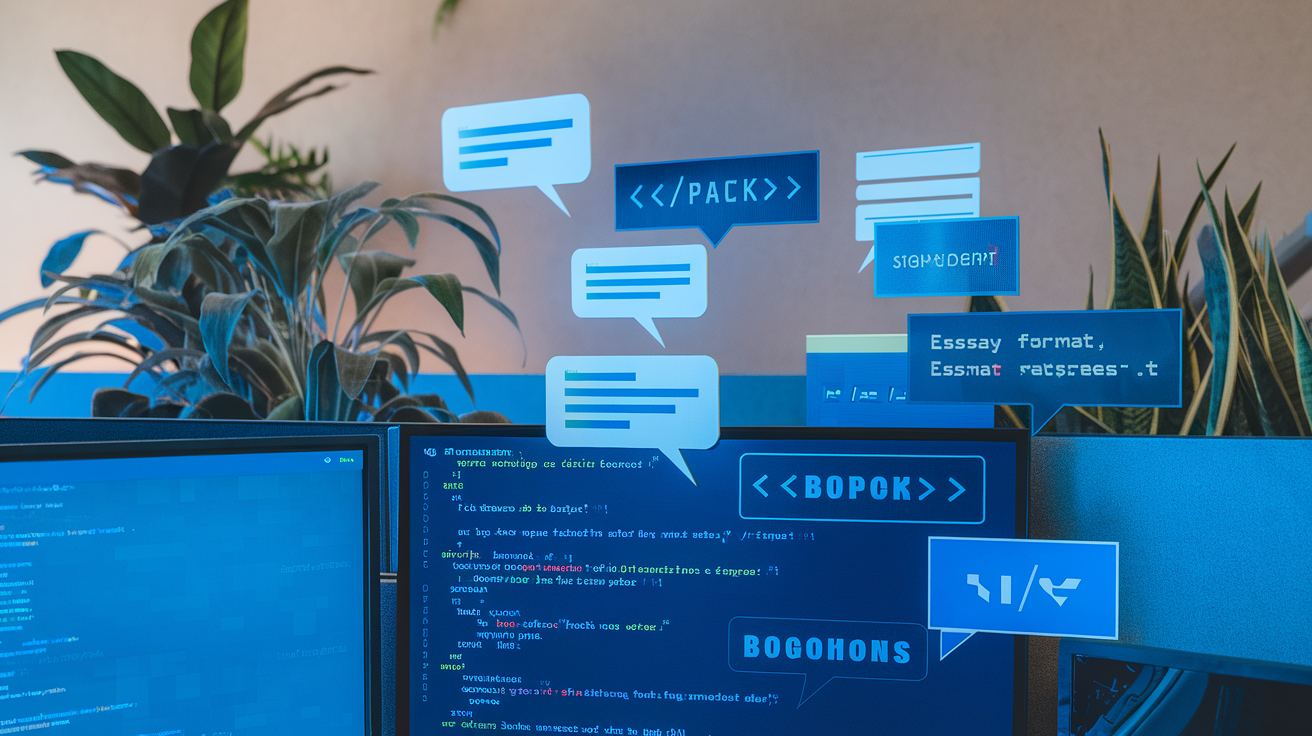AI and PM
Effective Prompts for AI Tools – 2nd Level
Ever stared at your AI assistant, typed something like “make me a logo” and wondered why you got back digital garbage? You’re not alone. 91% of people struggle to get what they want from AI tools because they don’t know how to ask properly.
Writing effective prompts for AI tools isn’t just some techie skill—it’s becoming as essential as knowing how to use Google. Master this, and you’ll unlock capabilities you didn’t even know existed.
Think of prompts as conversations, not commands. The difference between “write blog post about dogs” and a well-crafted prompt is like night and day. One gets you generic fluff; the other delivers exactly what you need.
But here’s what nobody tells you about prompt engineering: the real secret isn’t in the words you use, but in…
At a Glance

Effective prompt writing isn’t rocket science, but it does require strategy. Here’s what you need to know about crafting prompts that get results from AI tools:
Clear Intentions Win Every Time
The difference between a mediocre AI output and an exceptional one often comes down to how clearly you communicate what you want. Vague prompts create vague results. Specific prompts deliver specific gold.
Structure Matters
Break your prompts into logical sections:
- Context (what the AI needs to understand)
- Task (what you want it to do)
- Format (how you want the response structured)
- Tone (the voice you want it to use)
The Magic Formula
I need [specific output] about [subject] in the style of [example] for [purpose].
This simple template forces clarity and purpose into your request.
Iteration Is Your Friend
Your first prompt rarely hits the bullseye. Great prompters refine based on what they get back. Think of it as a conversation, not a one-and-done command.
Examples Work Wonders
When you show AI what success looks like, you dramatically increase your chances of getting it. Include samples of your desired output whenever possible.
Don’t overthink it. Start simple, be specific, and refine as you go. That’s the real secret to prompt mastery.
What is a Prompt?

A prompt is simply the input you give to an AI tool to get the output you want. Think of it as instructions for your AI assistant – the clearer your instructions, the better your results.
When you type “Write me a poem about cats” into ChatGPT, that’s a prompt. When you describe an image to DALL-E, that’s a prompt too. It’s your way of communicating what you want the AI to do.
But not all prompts are created equal. A weak prompt might be vague: “Write something good.” The AI has no idea what “good” means to you. It’s like asking a chef to make “tasty food” without specifying what flavors you enjoy.
A strong prompt provides context, details, and clear expectations: “Write a 4-stanza poem about orange tabby cats playing in autumn leaves, with a lighthearted tone and simple rhyme scheme.”
The beauty of prompts is their flexibility. They can be as short as a word or as detailed as several paragraphs. They can request specific formats, tones, perspectives, or styles.
Mastering prompts isn’t about finding magical phrases – it’s about clearly communicating what you want. The AI doesn’t read minds (yet), so your ability to articulate your needs determines how useful the output will be.
And here’s the thing – prompt writing is a skill that improves with practice. Each interaction teaches you more about how to get the best results from AI tools.
How AI Responds to Prompts

Understanding the Black Box
Ever wonder what’s happening when you type a prompt into ChatGPT or DALL-E? The AI isn’t just searching Google for answers. It’s processing your words through complex neural networks trained on massive datasets.
When you ask an AI to “write a poem about a sunset in the style of Emily Dickinson,” it’s not simply pulling Emily Dickinson poems and swapping in sunset references. It’s analyzing patterns from everything it’s learned about poetry, Dickinson’s unique style, and sunset imagery.
The Pattern Recognition Game
AI tools fundamentally work on pattern recognition. They predict what should come next based on what they’ve seen before. That’s why specificity matters so much.
If your prompt is vague like “give me marketing ideas,” the AI has too many possible patterns to choose from. But a prompt like “give me 5 email subject lines for a summer sale targeting busy parents” narrows the field of possible responses.
Context Windows Matter
AI tools have limited “memory” called context windows. This is how much information they can hold at once. Newer models have larger windows, but they’re still finite.
Think of it like having a conversation with someone who can only remember the last few exchanges. If you refer to something you mentioned 30 minutes ago, they might be lost. Same with AI – if your prompt is disconnected from the current conversation, the tool might miss crucial context.
Writing Effective Prompts

Provide Context
AI tools don’t know what you’re thinking. They can’t read your mind.
When you toss a vague prompt like “Write about dogs” at an AI, you’re basically asking it to guess what you want. And guess what? It’s probably going to get it wrong.
Instead, tell the AI who you are, what you need, and why you need it. This context helps the AI understand your perspective and tailor its response accordingly.
For example, instead of “Write about dogs,” try:
“I’m a veterinarian creating an educational pamphlet for new pet owners. Write a 300-word section about common health issues in puppies.”
See the difference? Night and day.
Be Specific
Vague prompts get vague results. It’s that simple.
The more specific you are, the better the output. Don’t just ask for “a blog post” – specify the topic, length, tone, audience, and purpose.
Compare these:
“Write a blog post about marketing” versus “Write a 1000-word blog post explaining content marketing strategies for small business owners with limited budgets. Use a conversational tone and include 3 actionable tips.”
The second prompt leaves little room for misinterpretation and sets clear expectations.
Building On the Conversation
AI tools have a memory (of sorts). Use it to your advantage.
Instead of cramming everything into one massive prompt, build your request through conversation. Start with a basic prompt, then refine the output with follow-up prompts.
This approach is especially useful when you’re not entirely sure what you want at first. You can react to what the AI produces and guide it toward your goal.
For example:
- “Write an introduction about climate change.”
- “Now make it more urgent and emotional.”
- “Add a statistic about rising sea levels.”
Each prompt builds on the previous one, creating a collaborative workflow between you and the AI.
Limitations

A. Focus More on Problems, Less on Prompts
AI tools are incredibly powerful, but they’re just that—tools. Many users get caught up in prompt engineering when they should be problem-solving instead.
Think about it this way: a hammer doesn’t care how nicely you ask it to hit a nail. What matters is understanding what you’re building.
When working with AI, start by clearly defining your problem:
- What specific outcome do you need?
- What does success actually look like?
- How will you use the AI’s output?
I’ve seen countless people spend hours tweaking prompts when they hadn’t even figured out what they were trying to accomplish. That’s backward.
The best prompt engineers aren’t obsessed with the prompts themselves—they’re obsessed with results.
B. Be Aware of AI’s Flaws
AI isn’t magic. It has serious limitations you need to understand:
- Hallucinations: AI can confidently make up facts that sound true but aren’t
- Outdated knowledge: Most models have knowledge cutoffs (GPT-4 doesn’t know about events after 2023)
- Context limitations: They can’t remember long conversations without help
- Reasoning gaps: Complex logic often trips them up
When I asked ChatGPT about recent election results, it apologized and made up statistics rather than admitting ignorance. This happens constantly.
AI tools excel at pattern recognition but lack true understanding. They’re probabilistic text generators, not thinking machines.
C. Avoid AI’s Potential Harms
The power of AI comes with responsibility. Your prompts can lead to:
- Misinformation spread: Generated content that looks authoritative but contains errors
- Bias amplification: AI systems can magnify social biases present in their training data
- Privacy concerns: Sharing sensitive data in prompts may expose information
- Overreliance: Becoming dependent on AI for tasks that require human judgment
Don’t ask AI to generate content that could harm others. Avoid prompts that could produce misleading medical advice, legal guidance, or hateful content.
Always fact-check AI outputs, especially for critical information. The most dangerous mistake is blindly trusting what AI tells you.
Conclusion

Mastering the art of prompt writing isn’t something that happens overnight. It takes practice, experimentation, and a willingness to refine your approach based on results.
The difference between getting mediocre and exceptional outputs from AI tools often comes down to how well you communicate what you want. A vague prompt leads to vague results. A thoughtful, structured prompt opens up possibilities you might not have imagined.
Think of prompt writing as a conversation with a brilliant but literal-minded assistant. The clearer you are, the better they can help you.
When you hit roadblocks with AI tools, the problem usually isn’t the technology—it’s the prompt. Before blaming the tool, ask yourself: “Could I explain this better? Am I providing enough context? Have I specified the format I need?”
Start simple, then build complexity. Pay attention to what works. Save your best prompts as templates. And most importantly, keep experimenting.
The prompts that work best aren’t necessarily the longest or most technical—they’re the ones that most clearly bridge the gap between what’s in your head and what the AI needs to understand.
Your prompt-writing skills will grow alongside the technology itself. What seems challenging today will become second nature tomorrow.
Now go write some amazing prompts. Your AI tools are waiting.
References

Key Resources for Prompt Engineering
Want to take your AI prompting skills to the next level? These resources will help you craft prompts that get exactly what you need from AI tools.
Dang, there’s a ton of great stuff out there. I’ve curated the best ones so you don’t have to wade through the mediocre content.
- “The Art of ChatGPT Prompting” by Jules White – Breaks down complex prompting techniques into digestible chunks. Perfect if you’re just starting out.
- OpenAI’s Prompt Engineering Guide – Straight from the source. Their documentation gives you insider tips on how their models respond to different prompt structures.
- Prompt Engineering Subreddit – Real people sharing what actually works. Sometimes the community discovers tricks before they’re documented anywhere else.
Learning Communities
- PromptBase – Think of it as a marketplace for proven prompts. See what works for others and adapt it to your needs.
- The DAIR Institute – They regularly publish research on optimal prompt design. More technical, but worth checking out if you’re serious about this.
- Anthropic’s Claude Documentation – Different AI models respond differently to prompts. This helps you understand the nuances if you’re using multiple tools.
Remember, the best way to get better at prompt writing is practice. Keep a prompt journal to track what works and what bombs. Your future self will thank you.

Effective prompts are the key to unlocking the full potential of AI tools. By understanding what prompts are, how AI systems respond to them, and following best practices for prompt creation, you can significantly improve your interactions with artificial intelligence. Remember that being clear, specific, and providing sufficient context will help you get more accurate and useful responses from AI systems.
As you begin crafting your own prompts, be mindful of the current limitations of AI tools, but don’t let these constraints discourage you. With practice and experimentation, you’ll develop a valuable skill that enhances your productivity and creativity when working with AI. Start applying these techniques today to transform the way you communicate with artificial intelligence.

